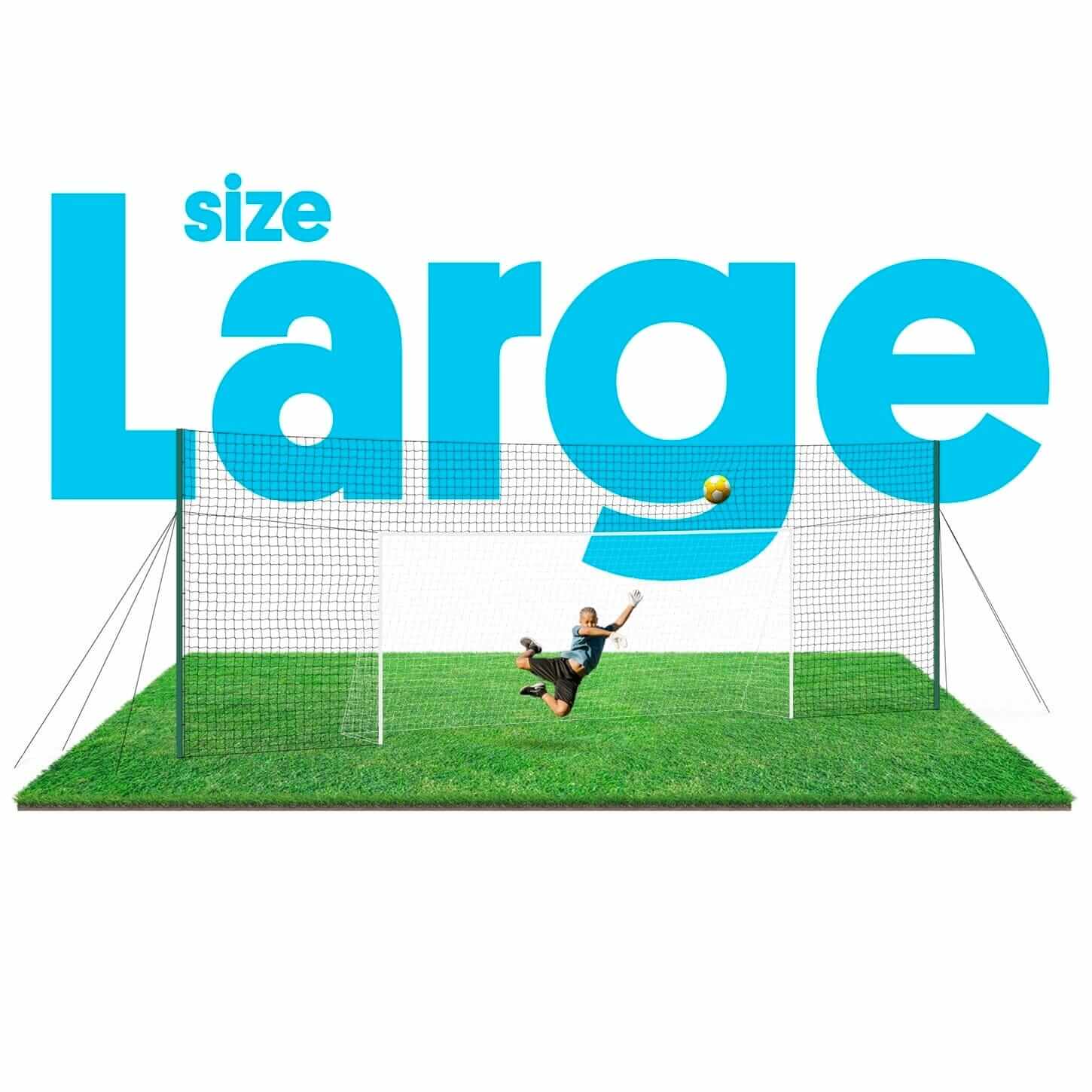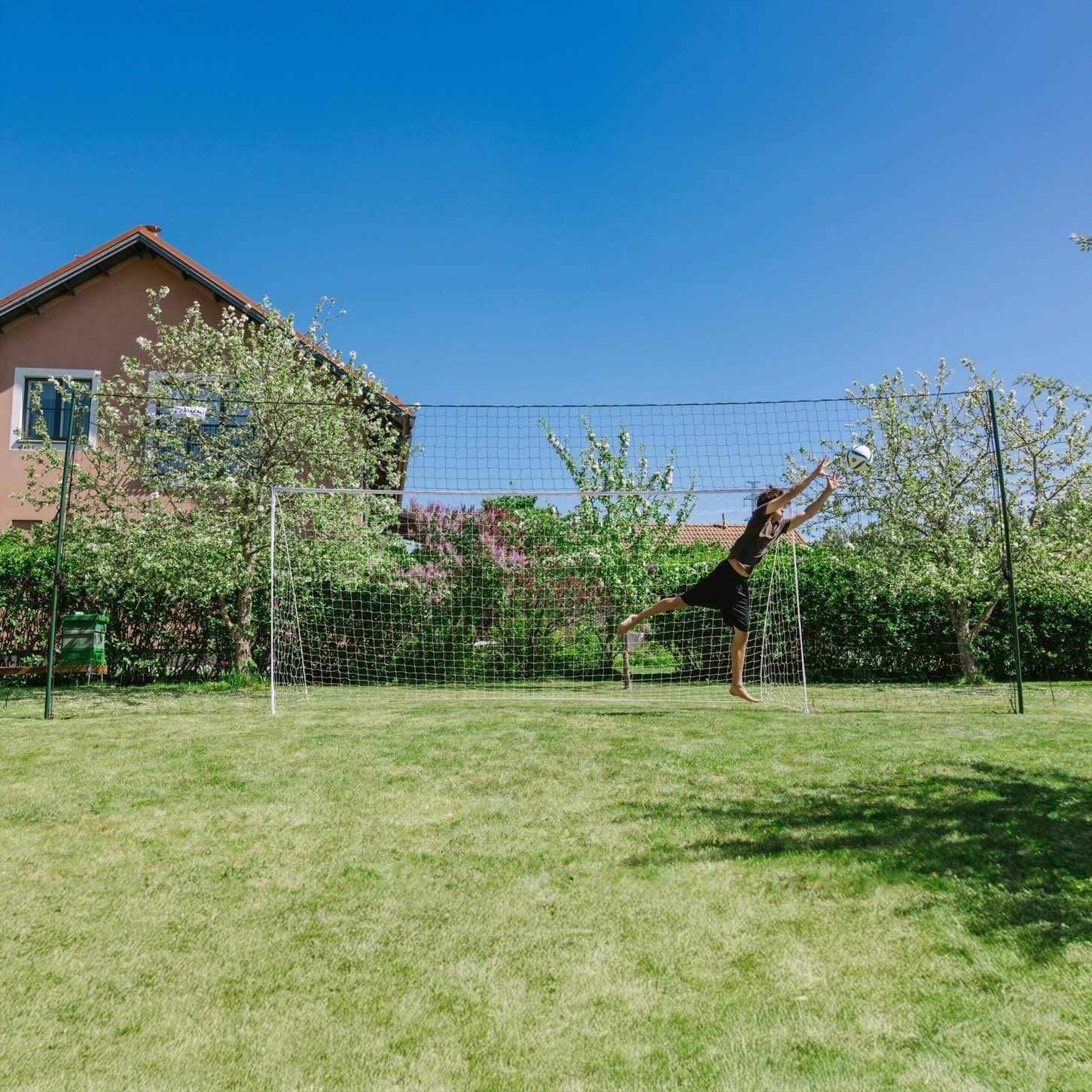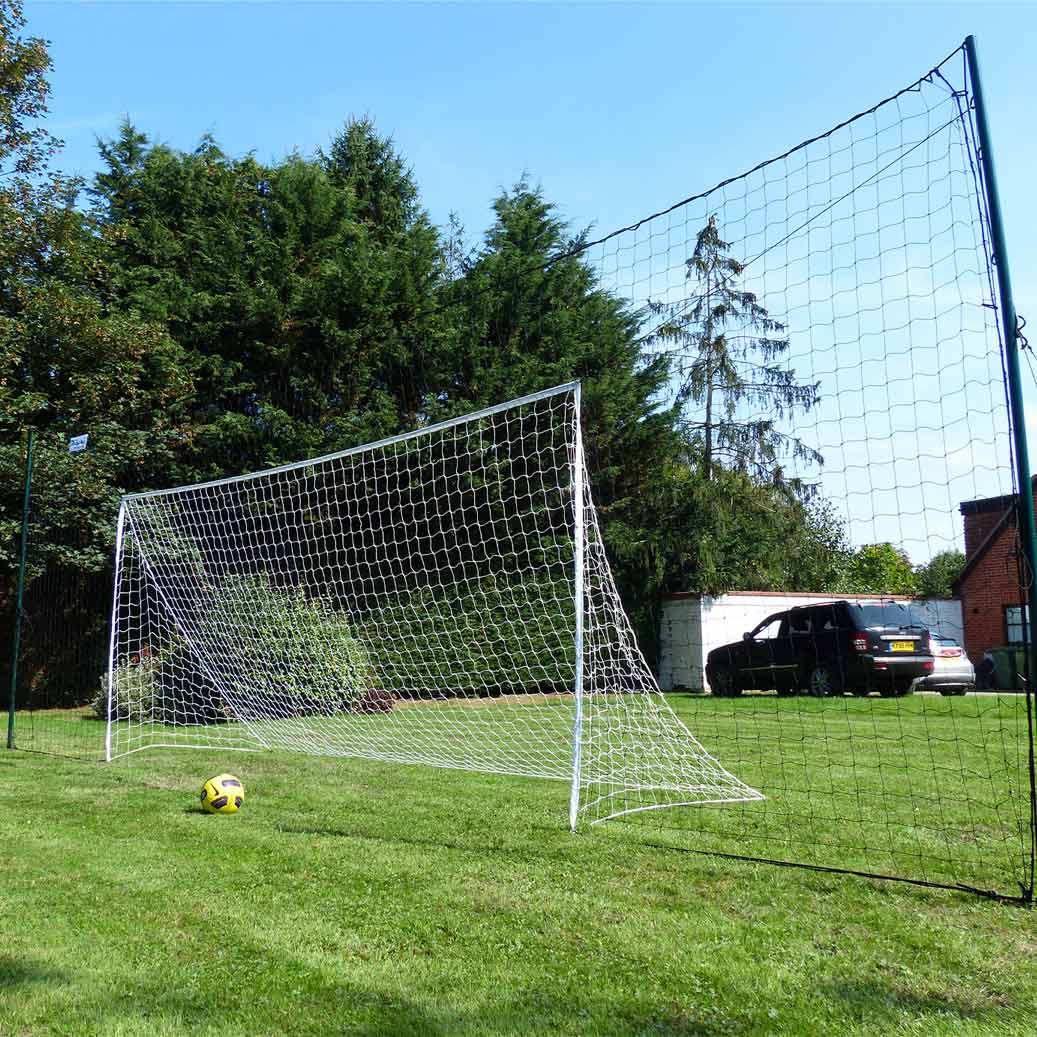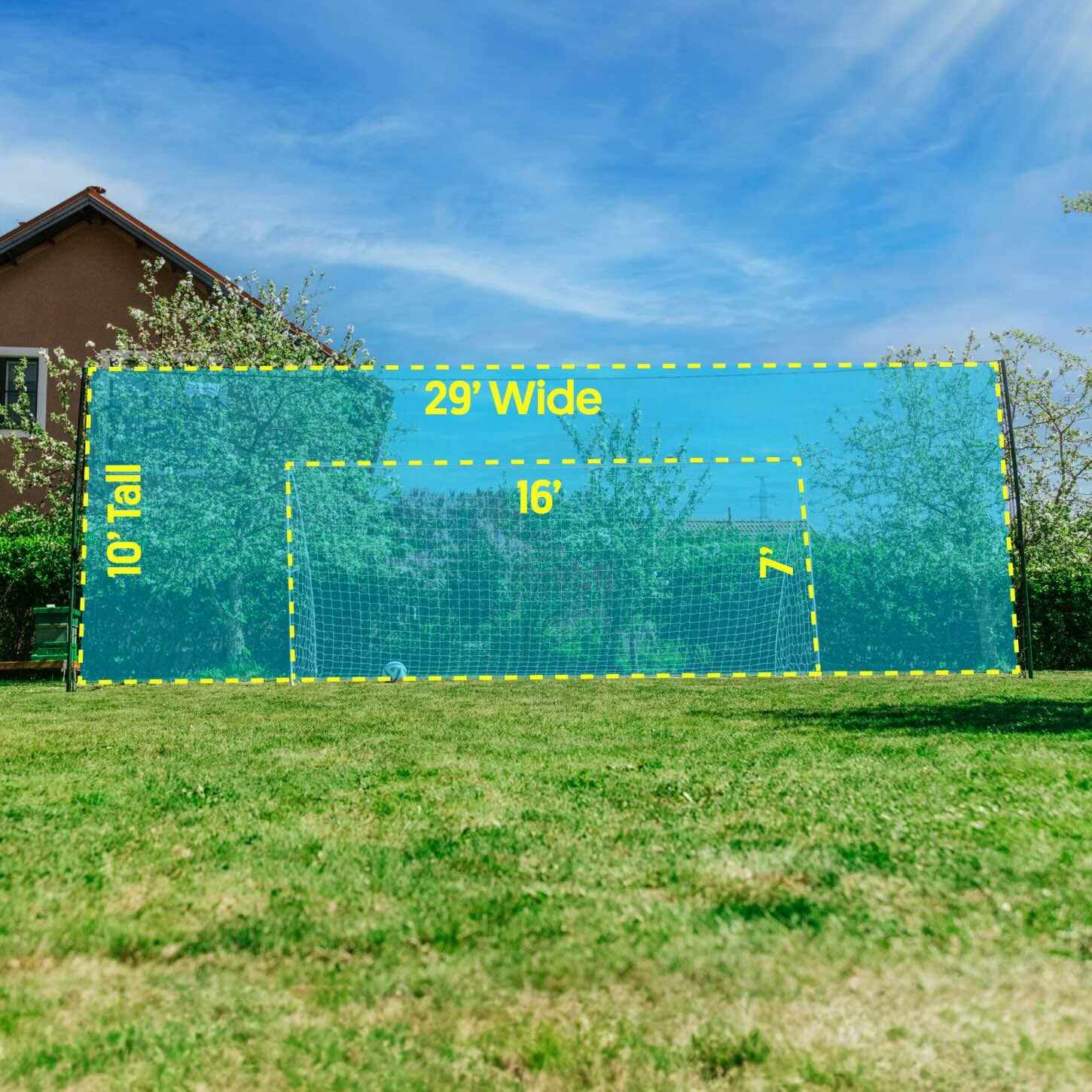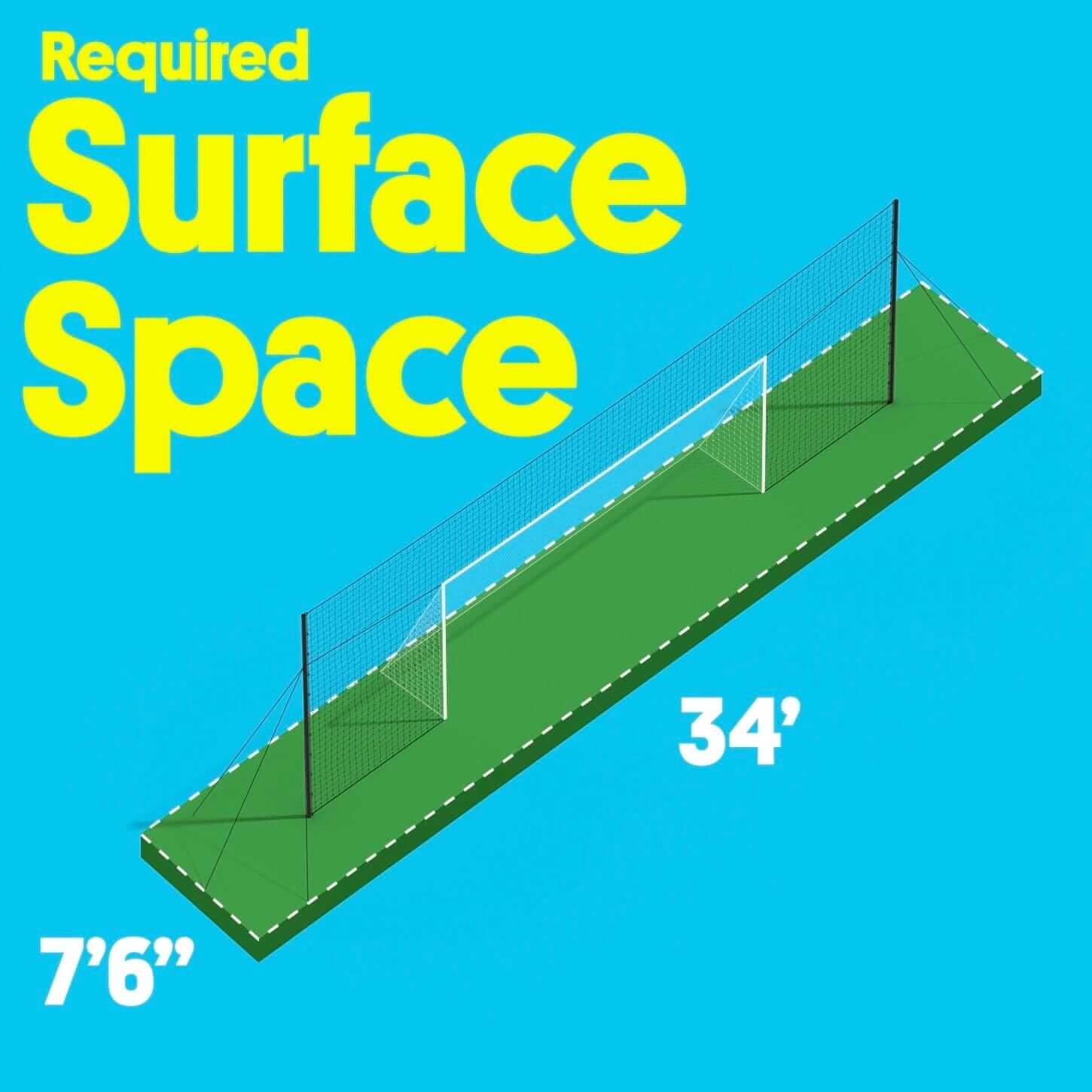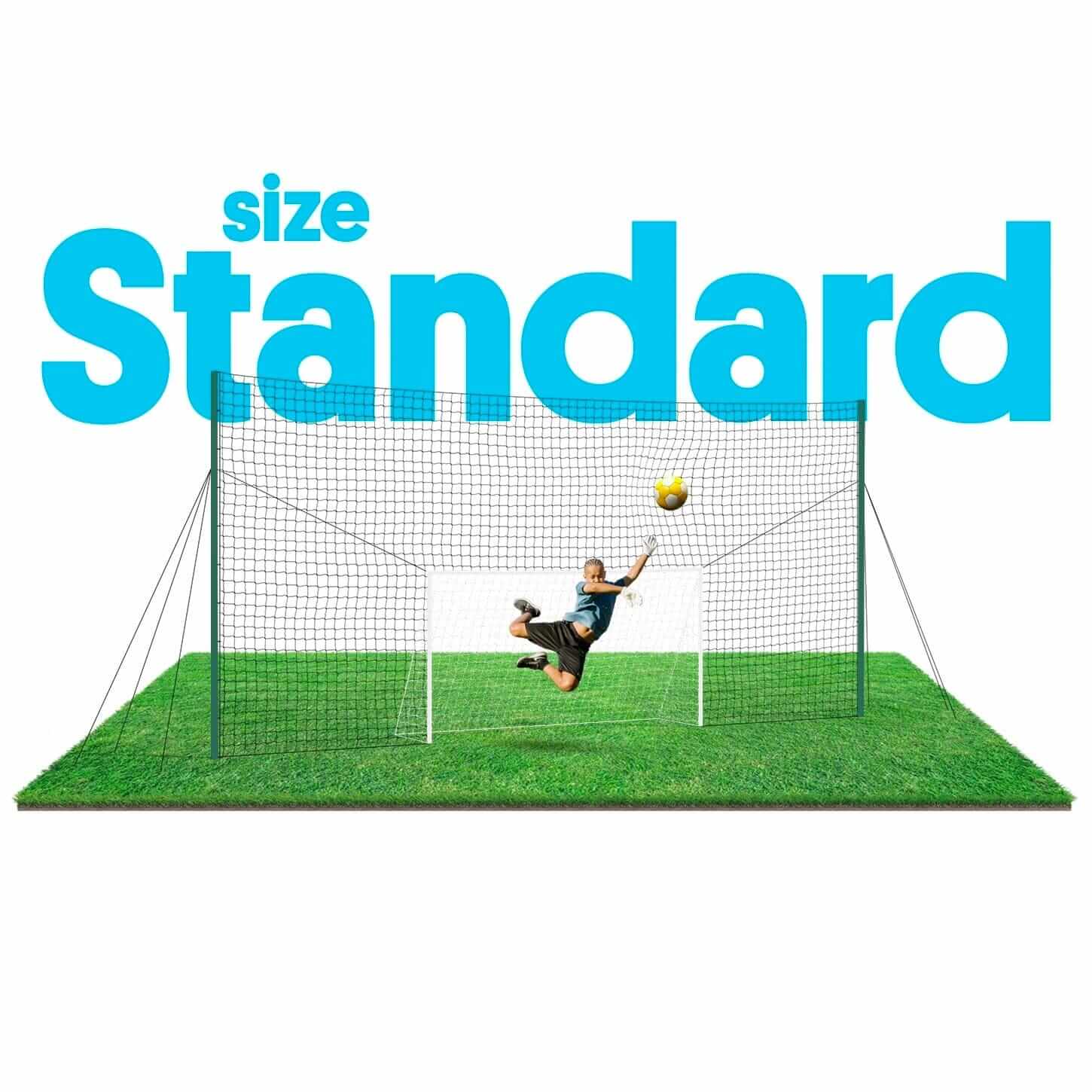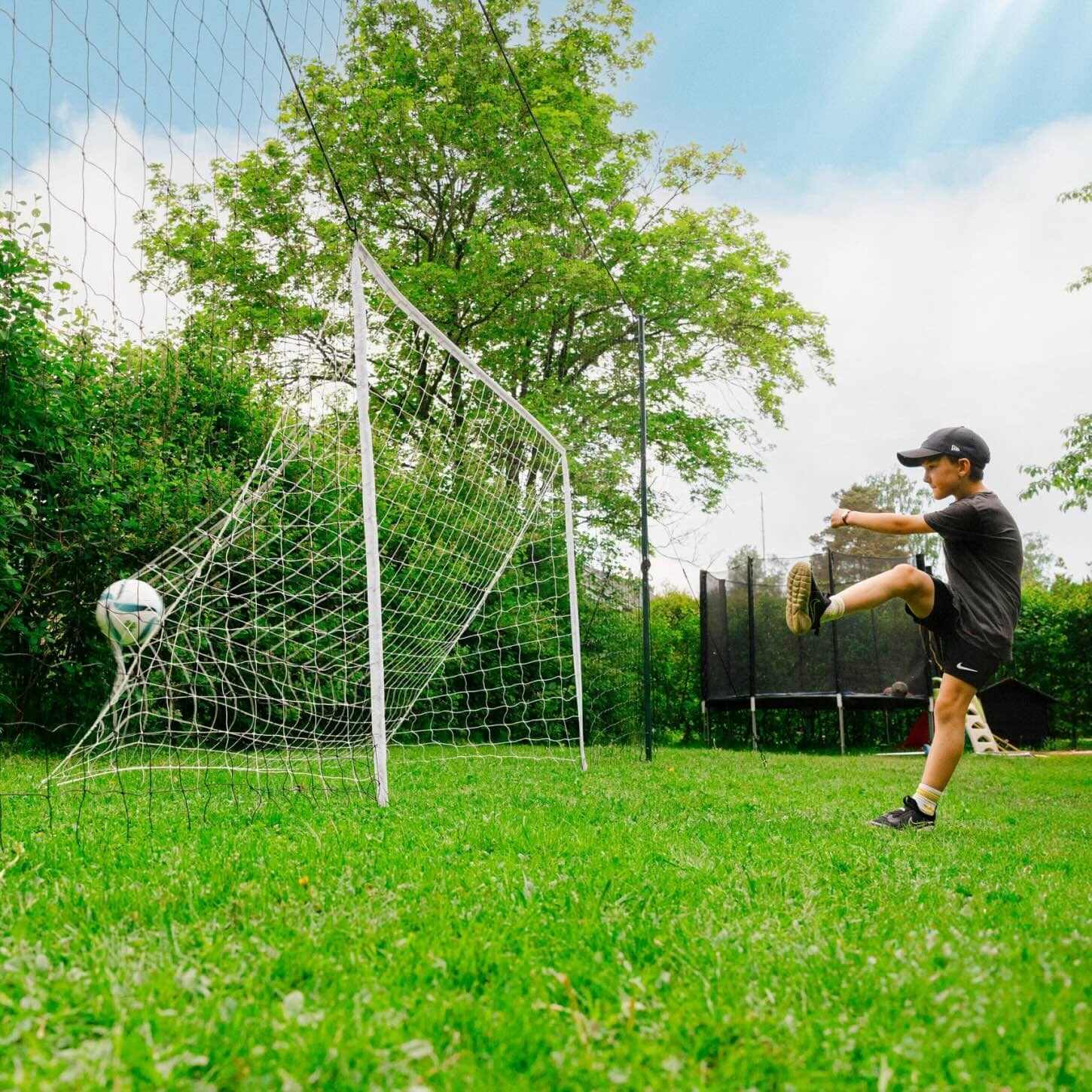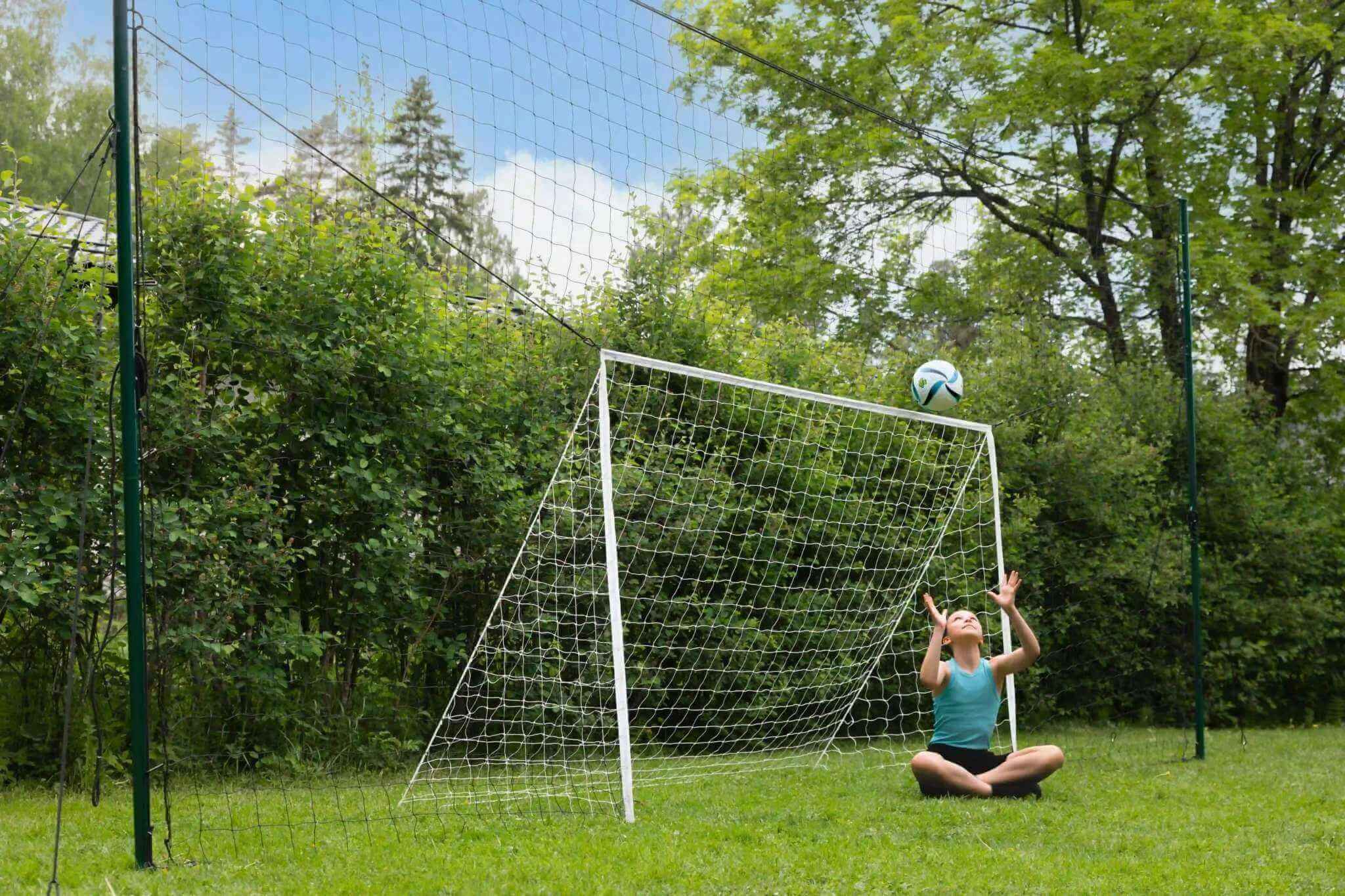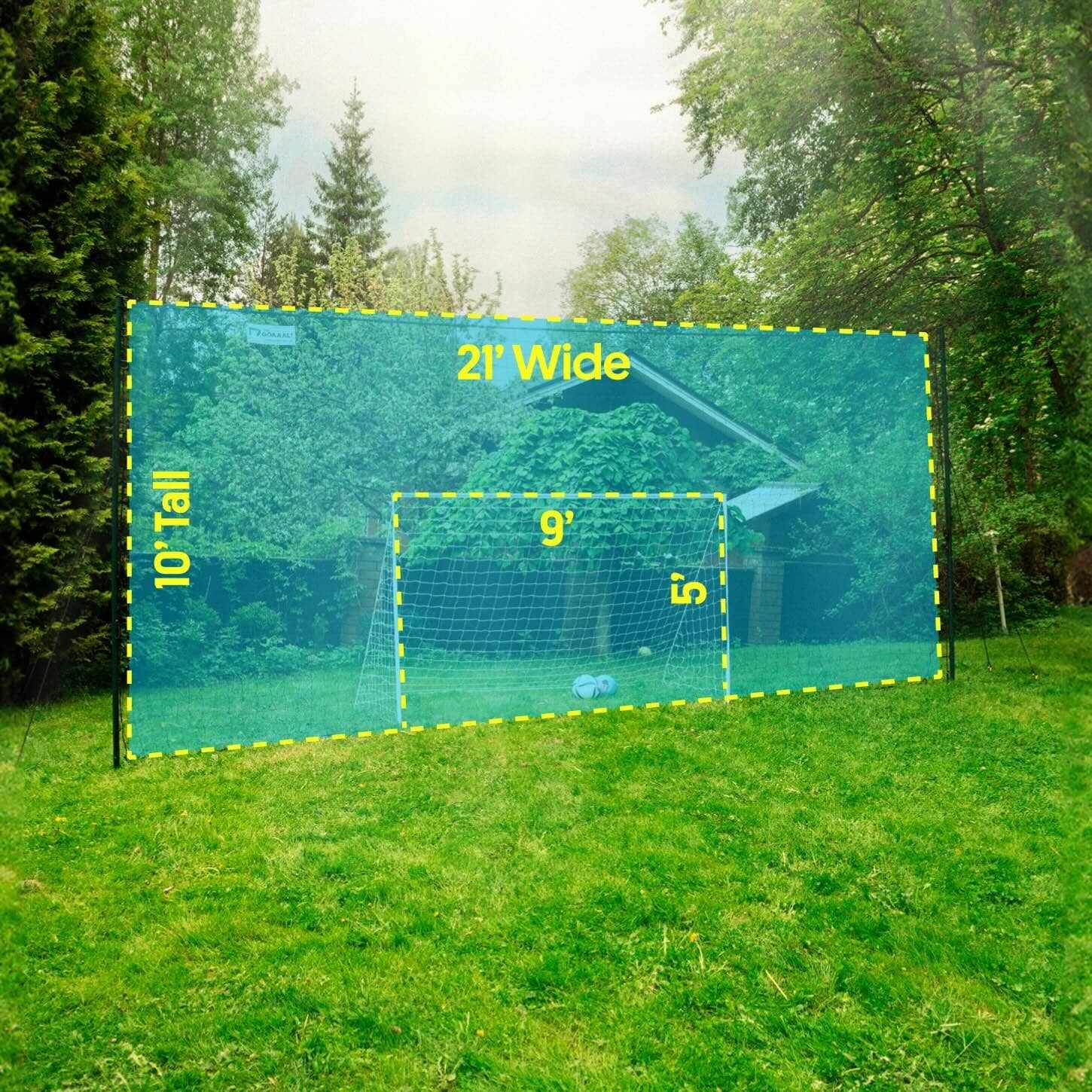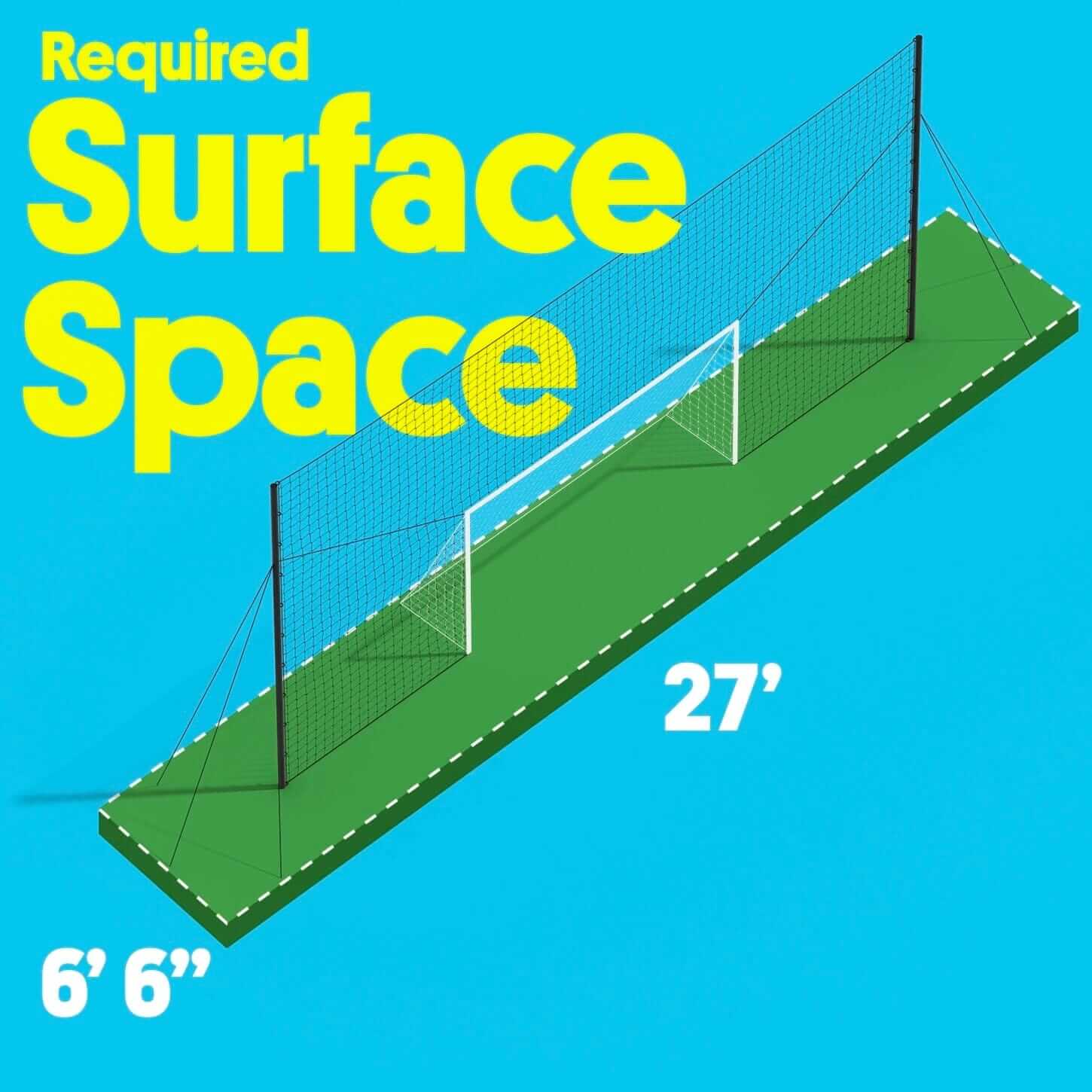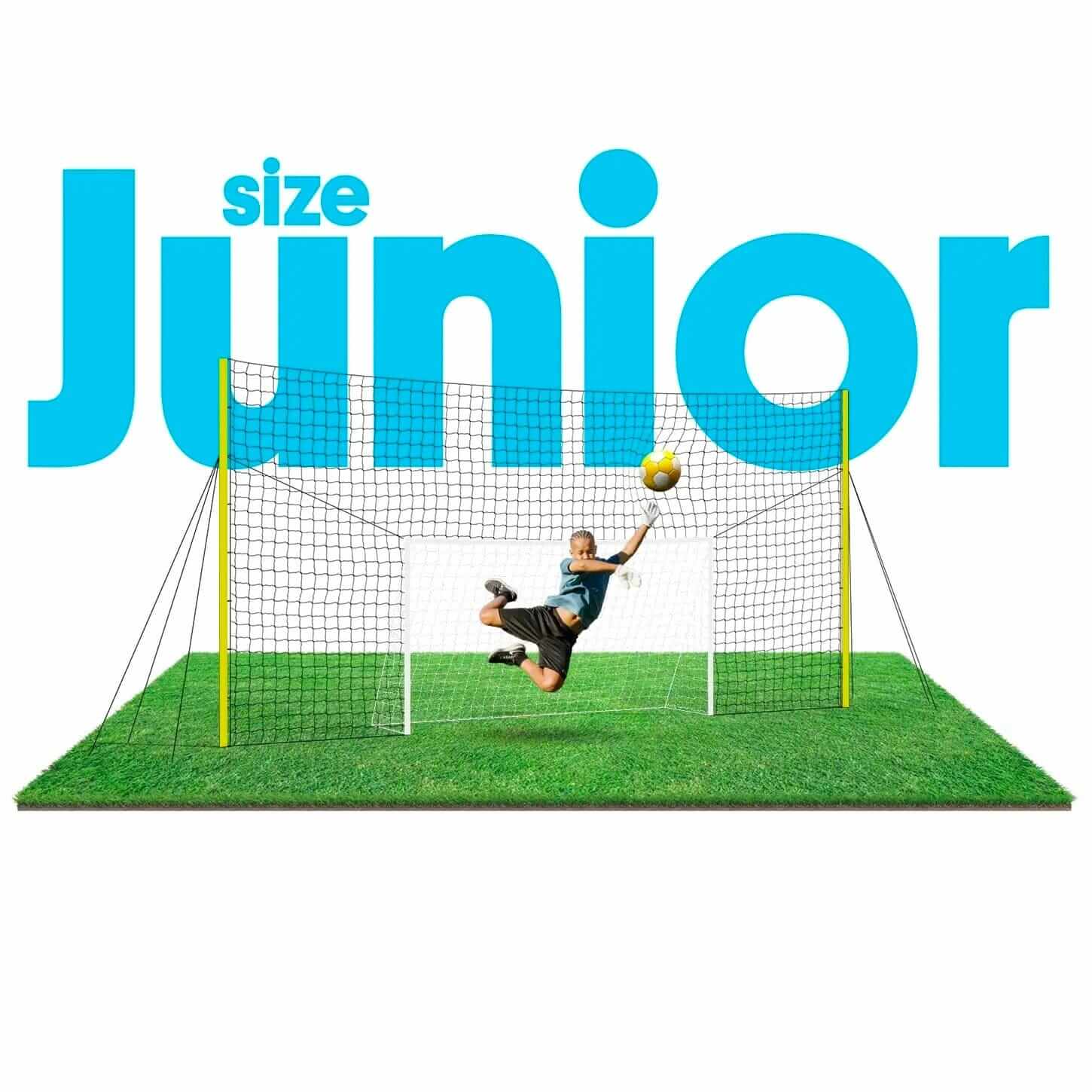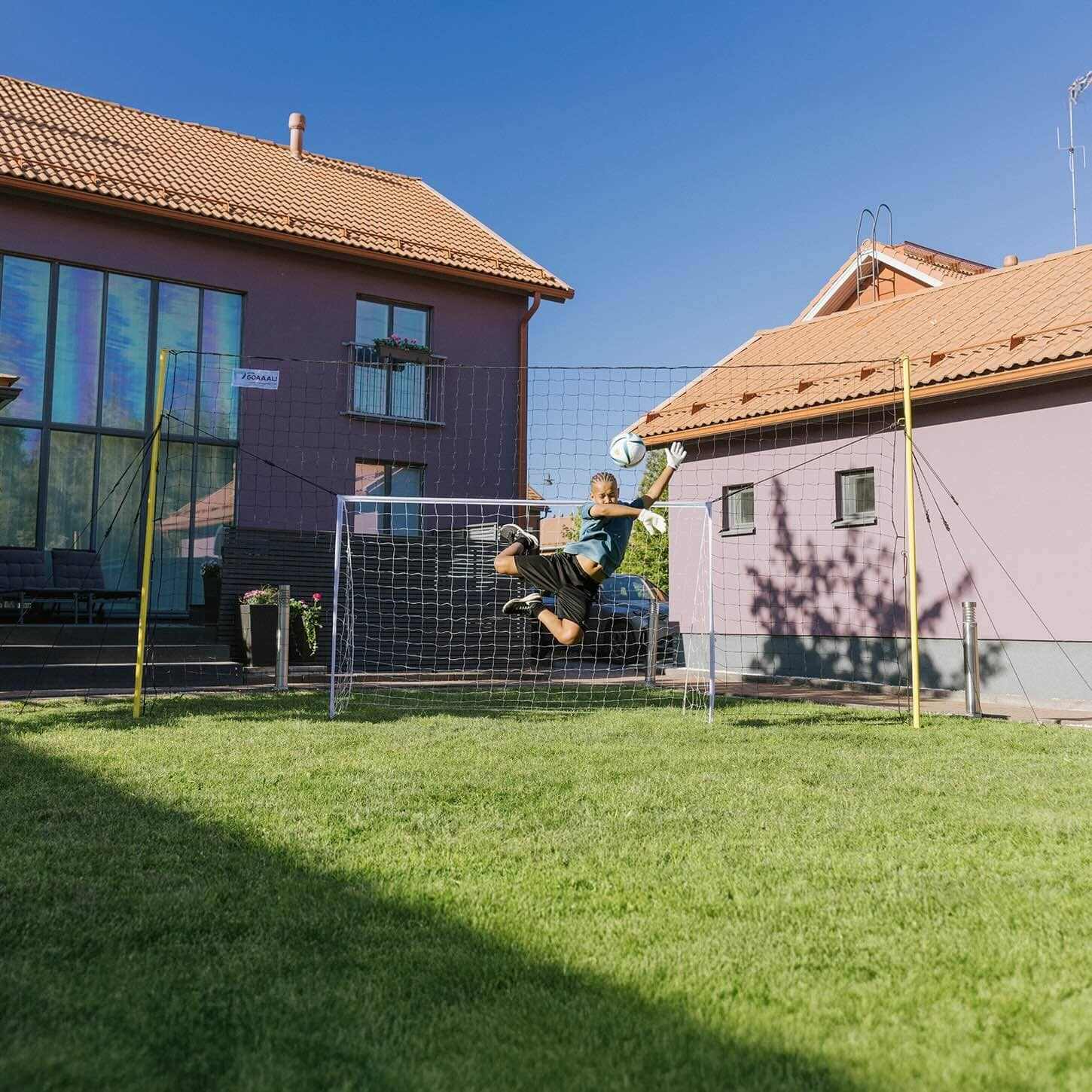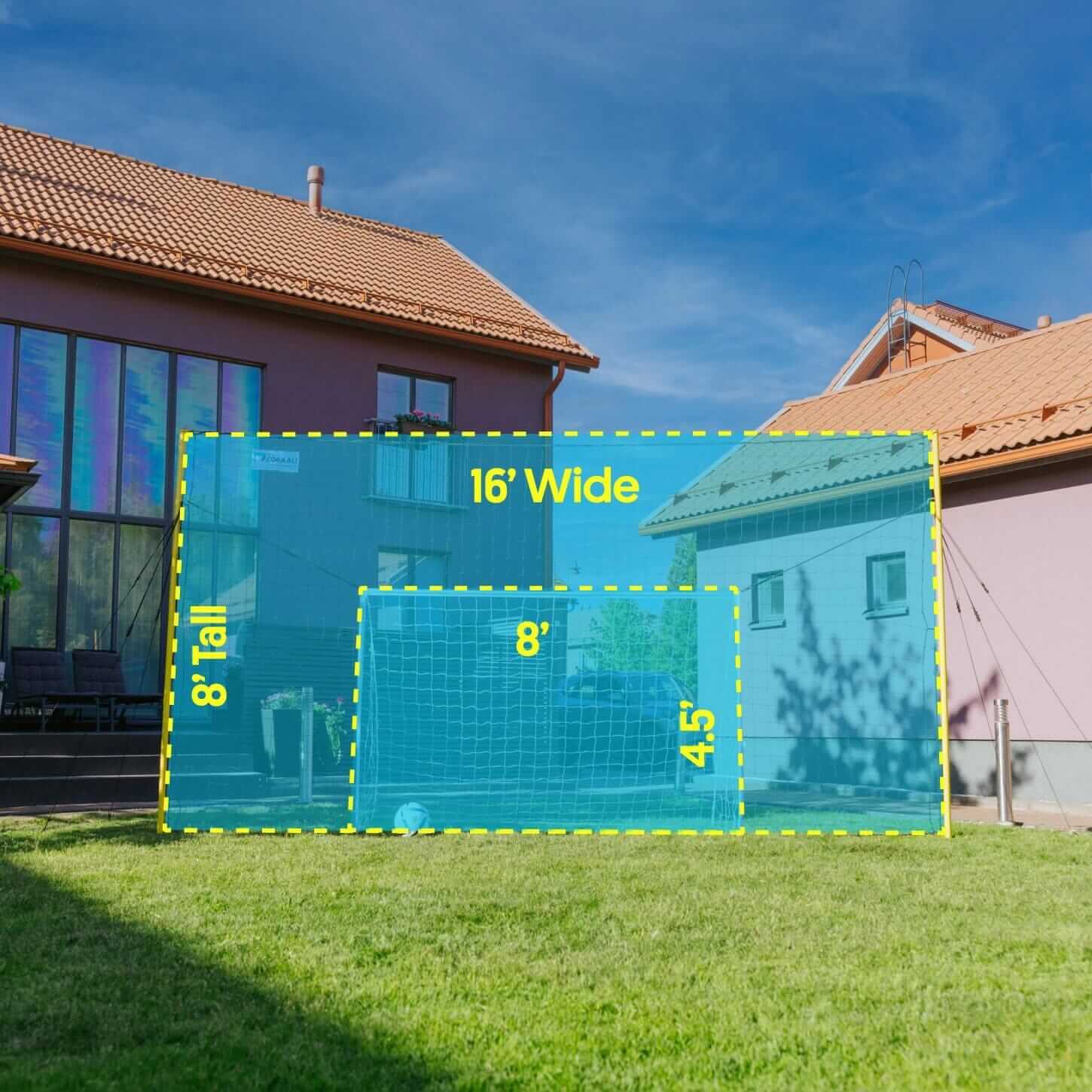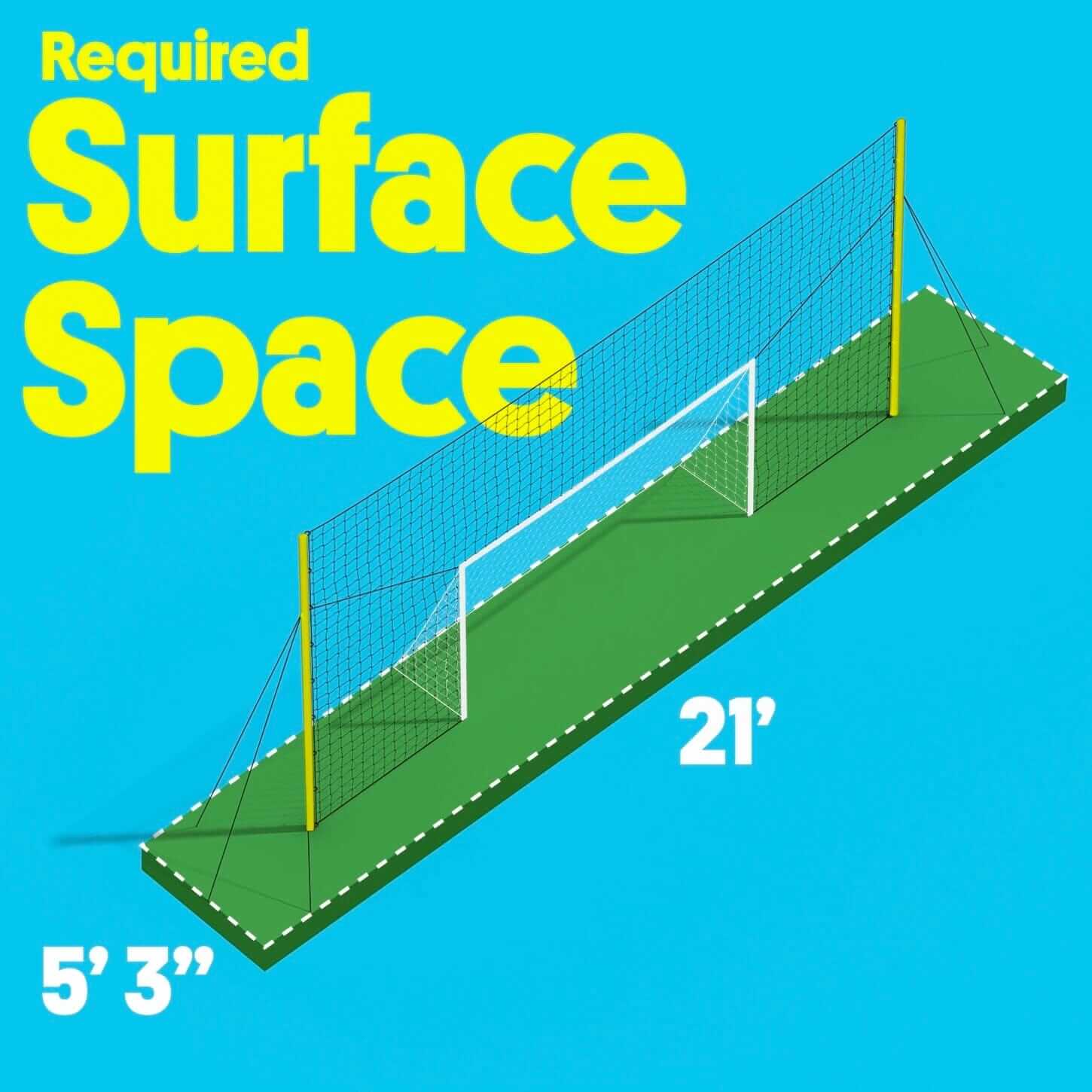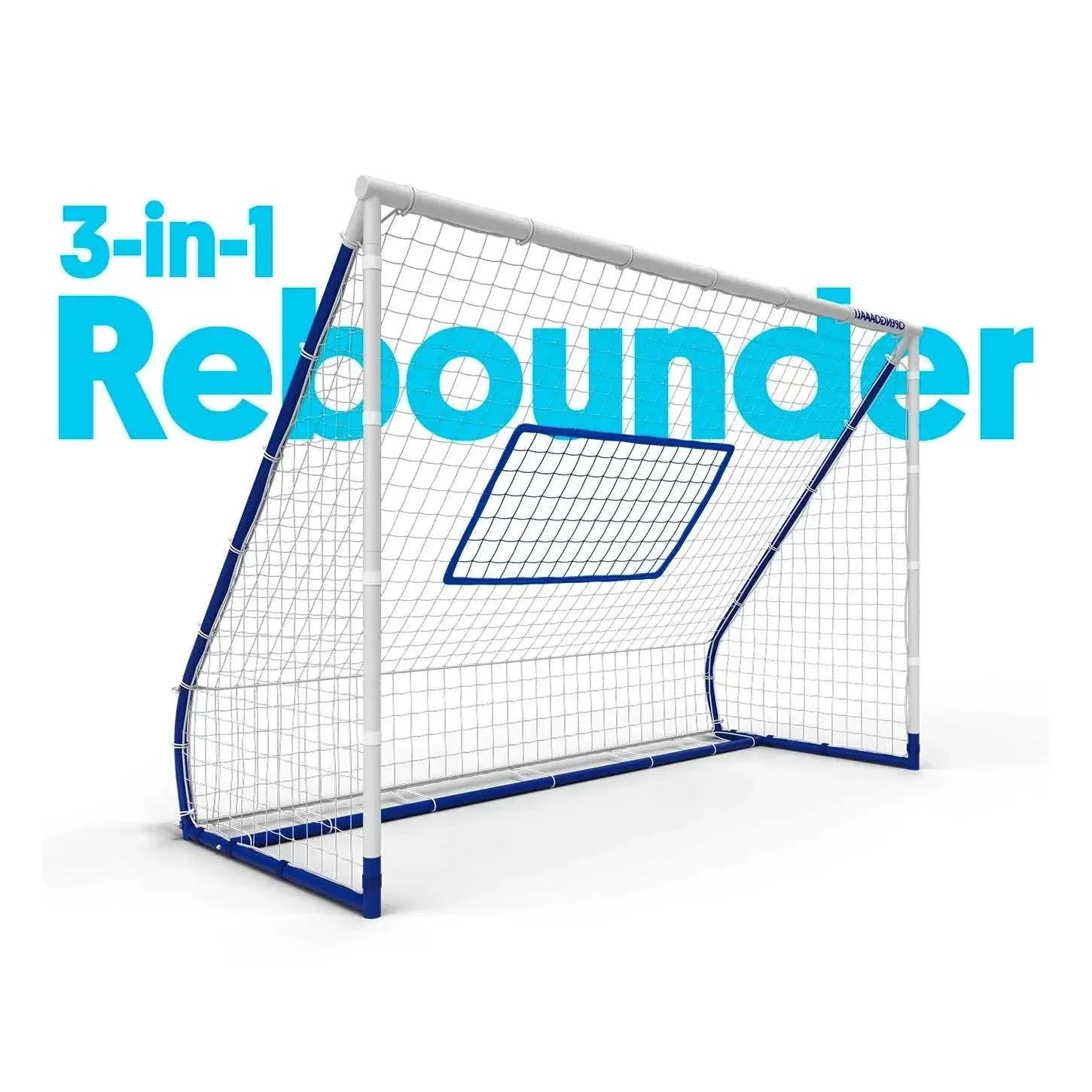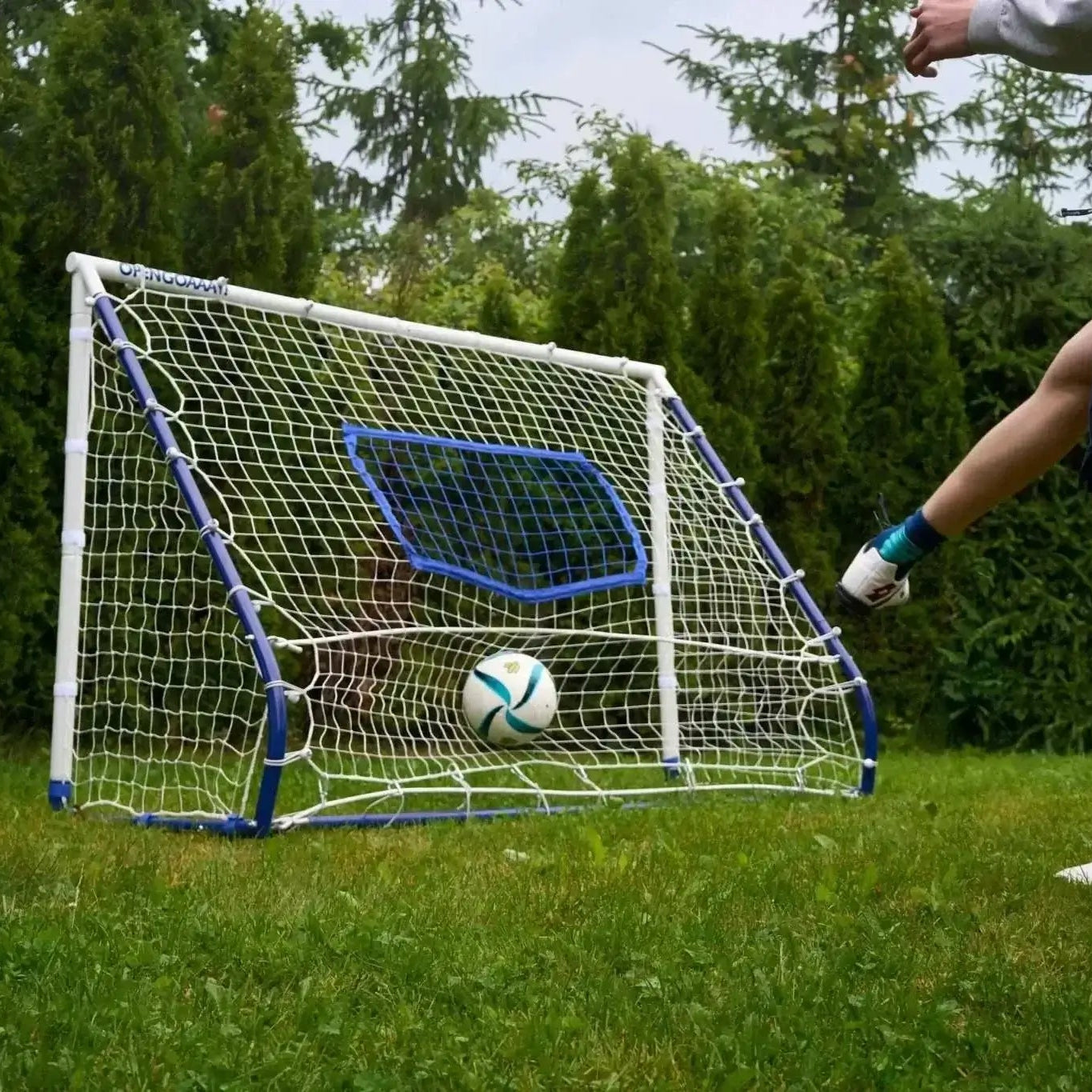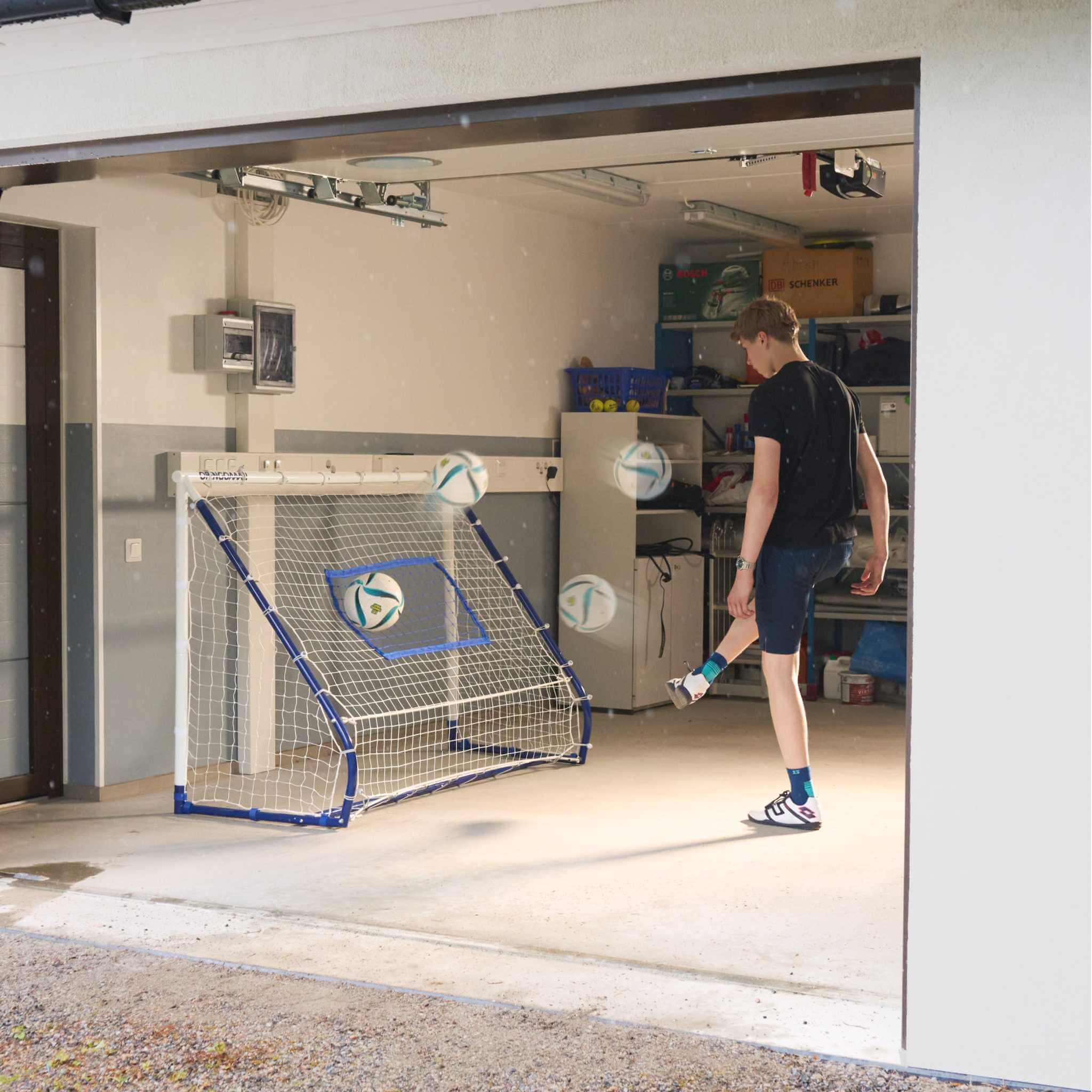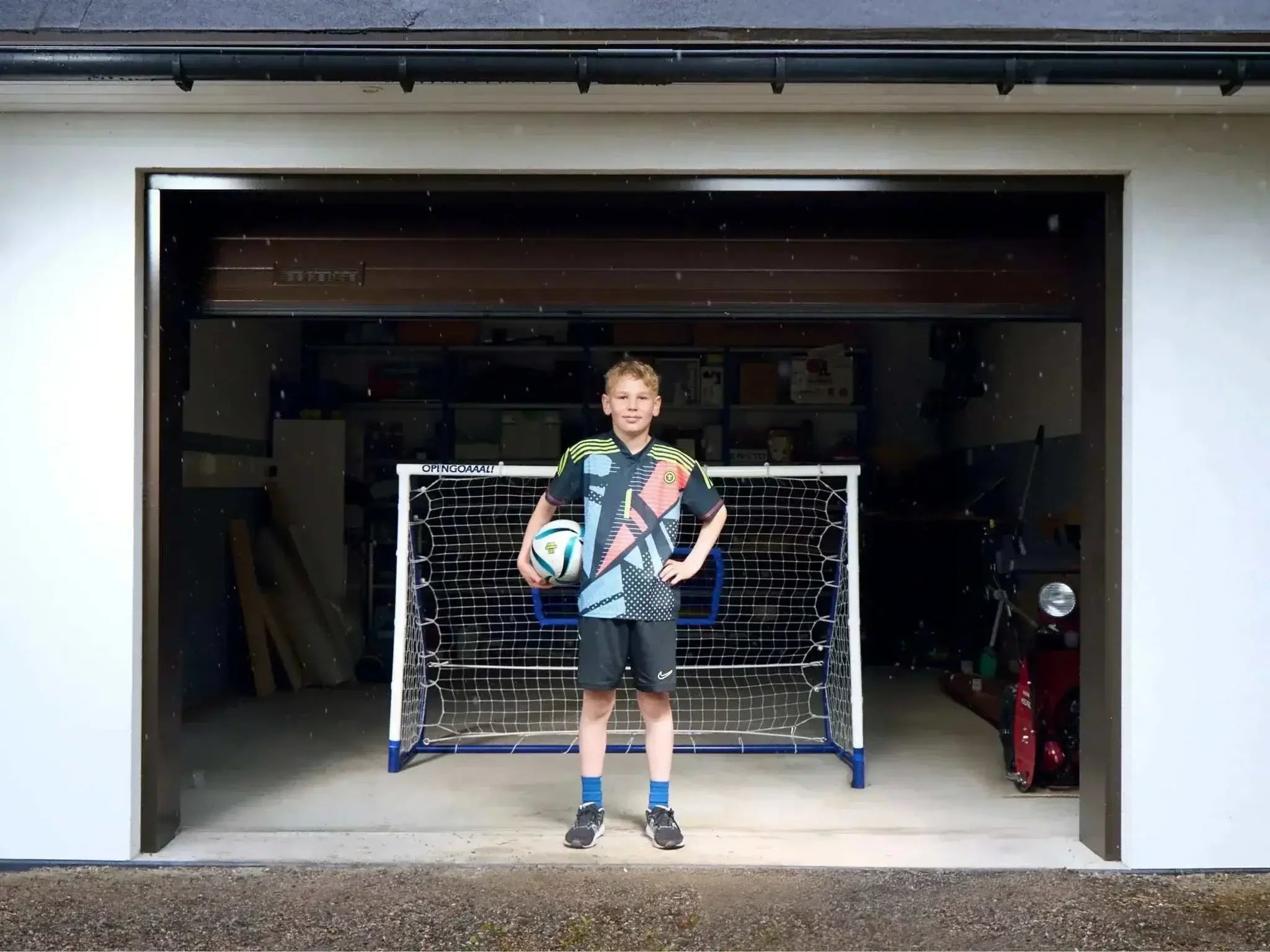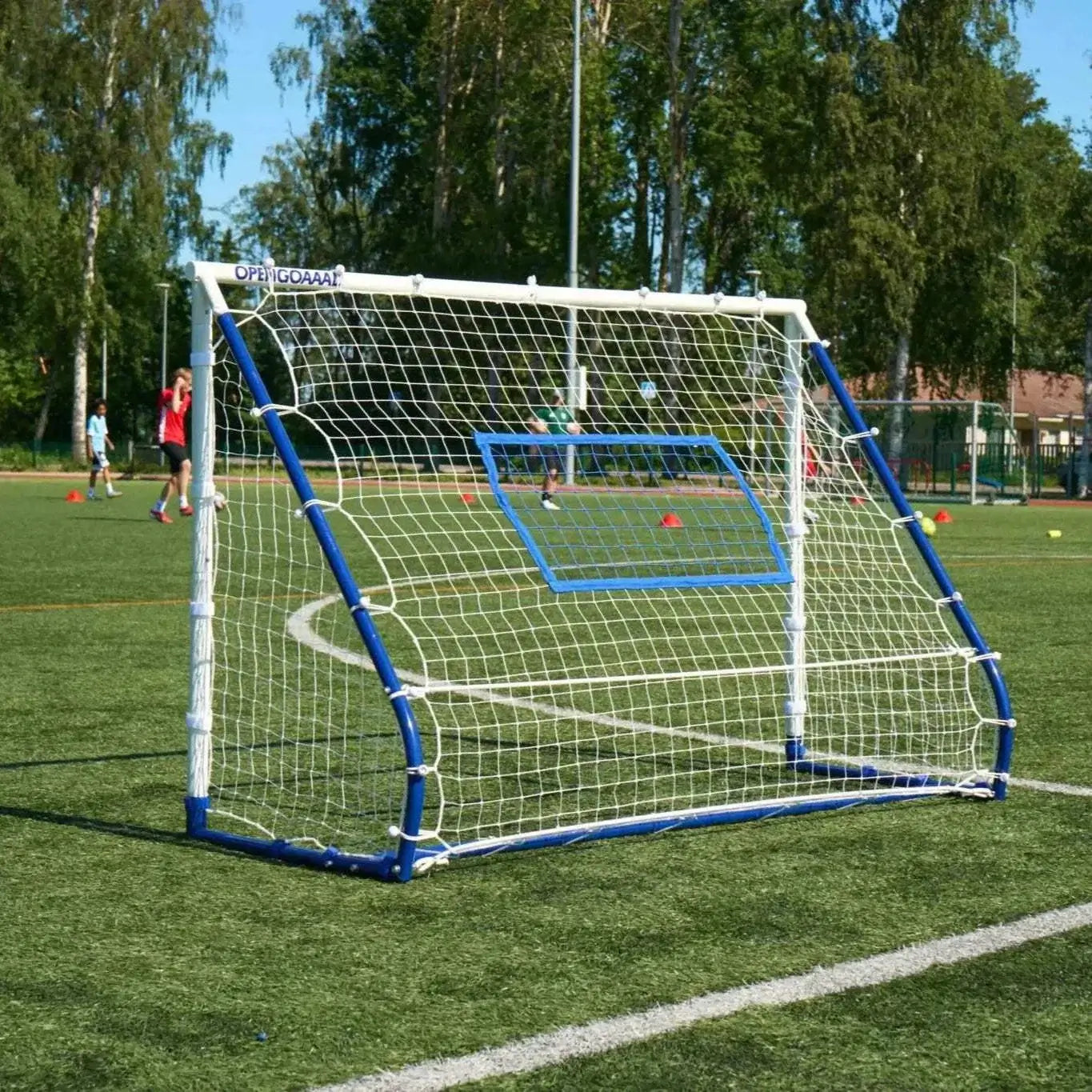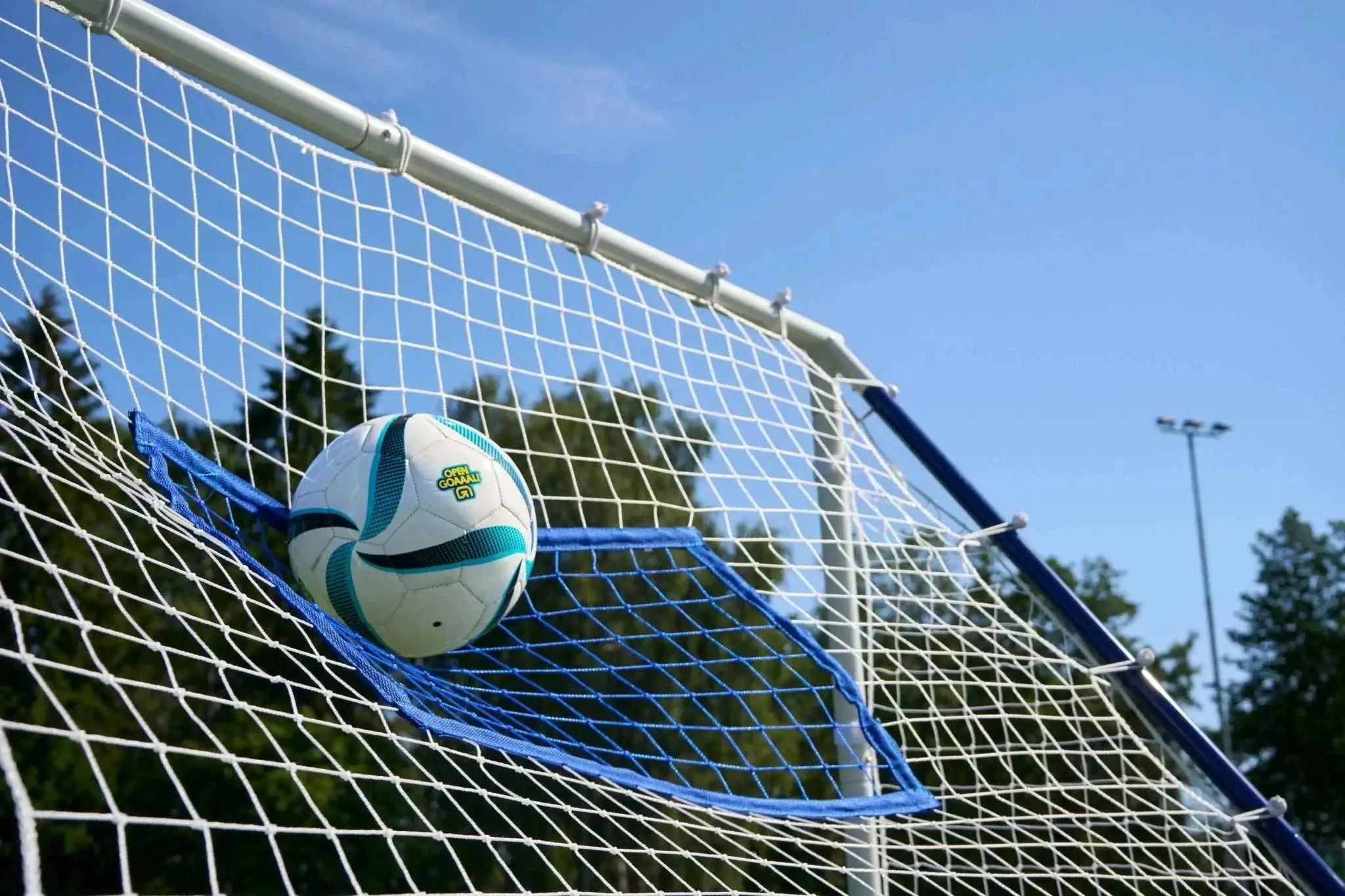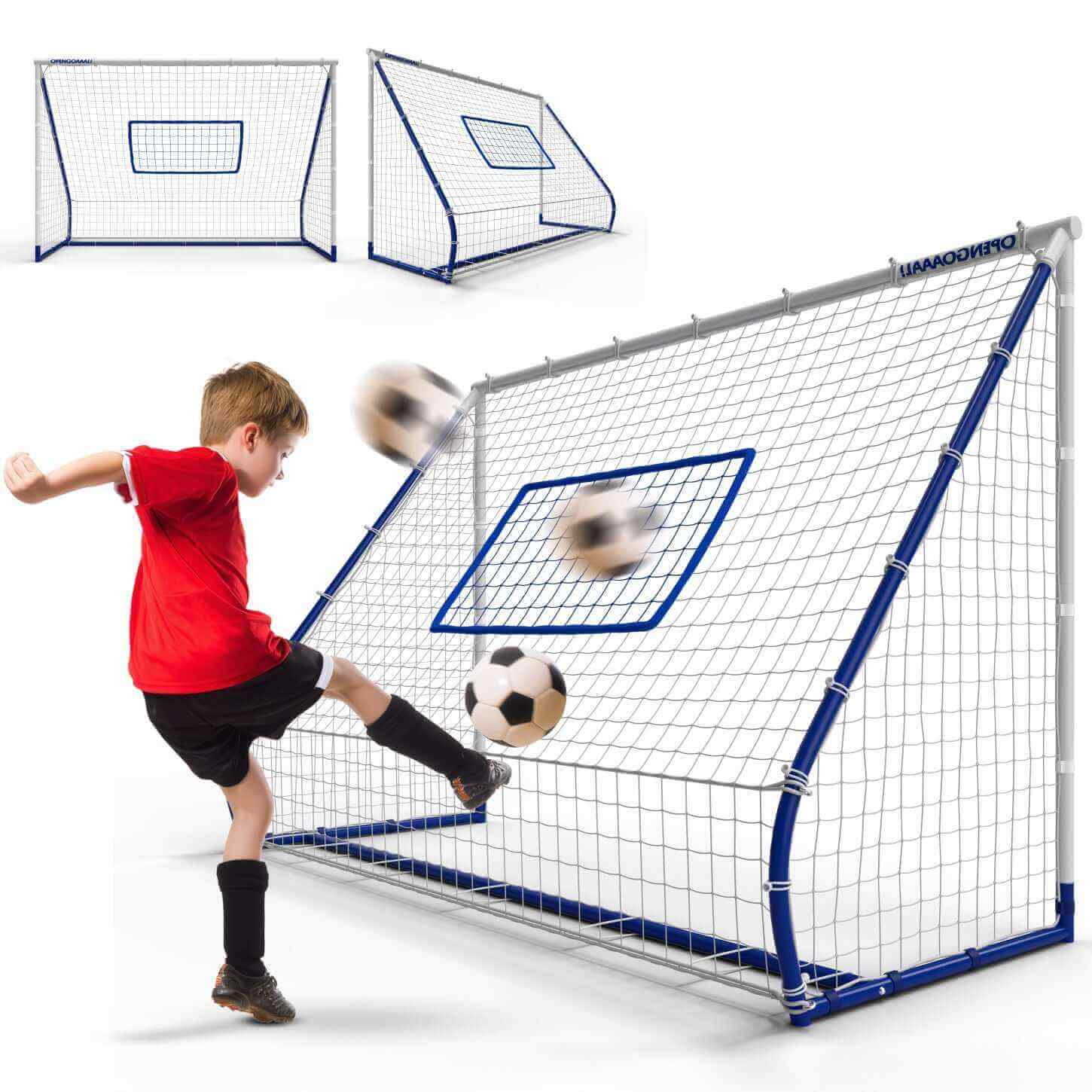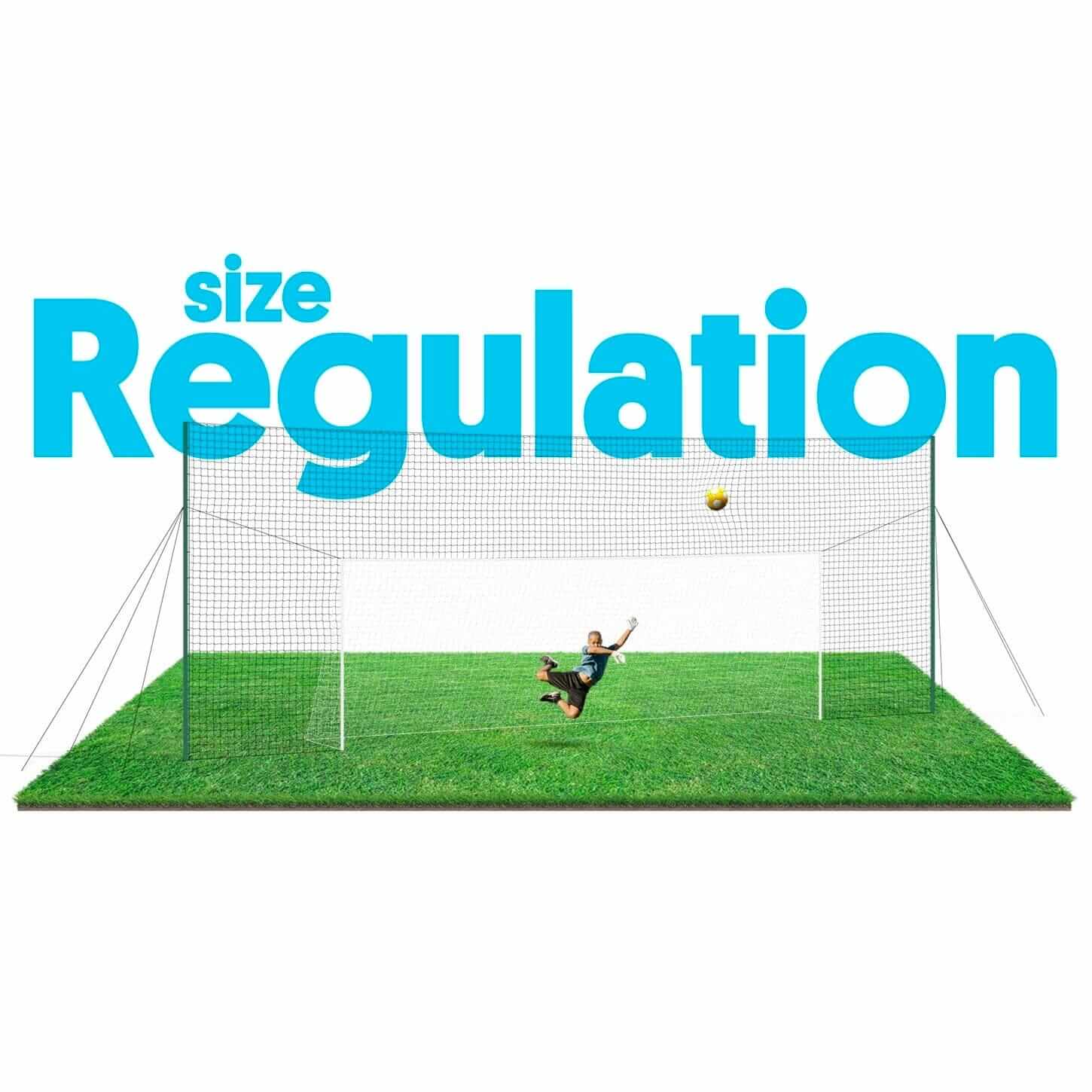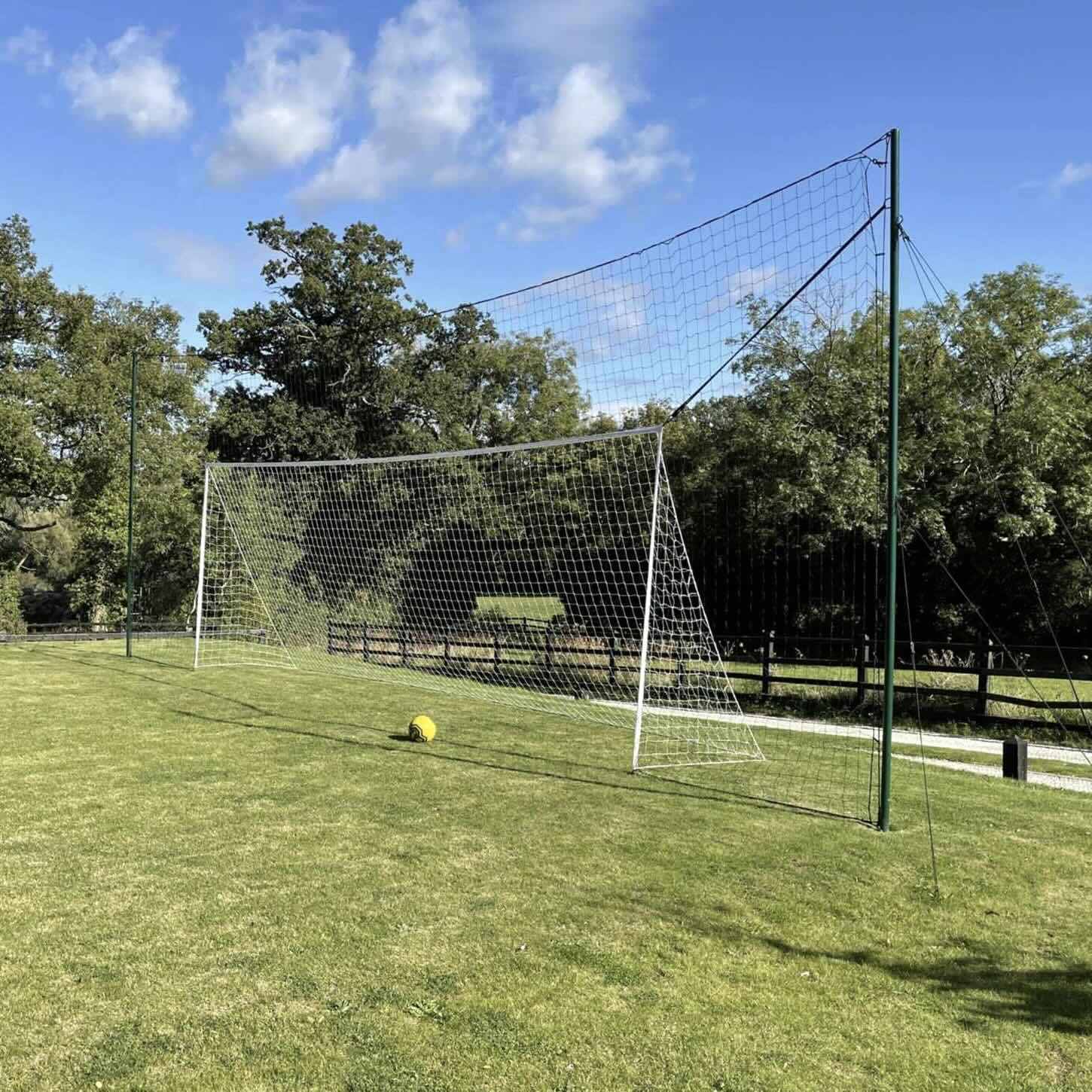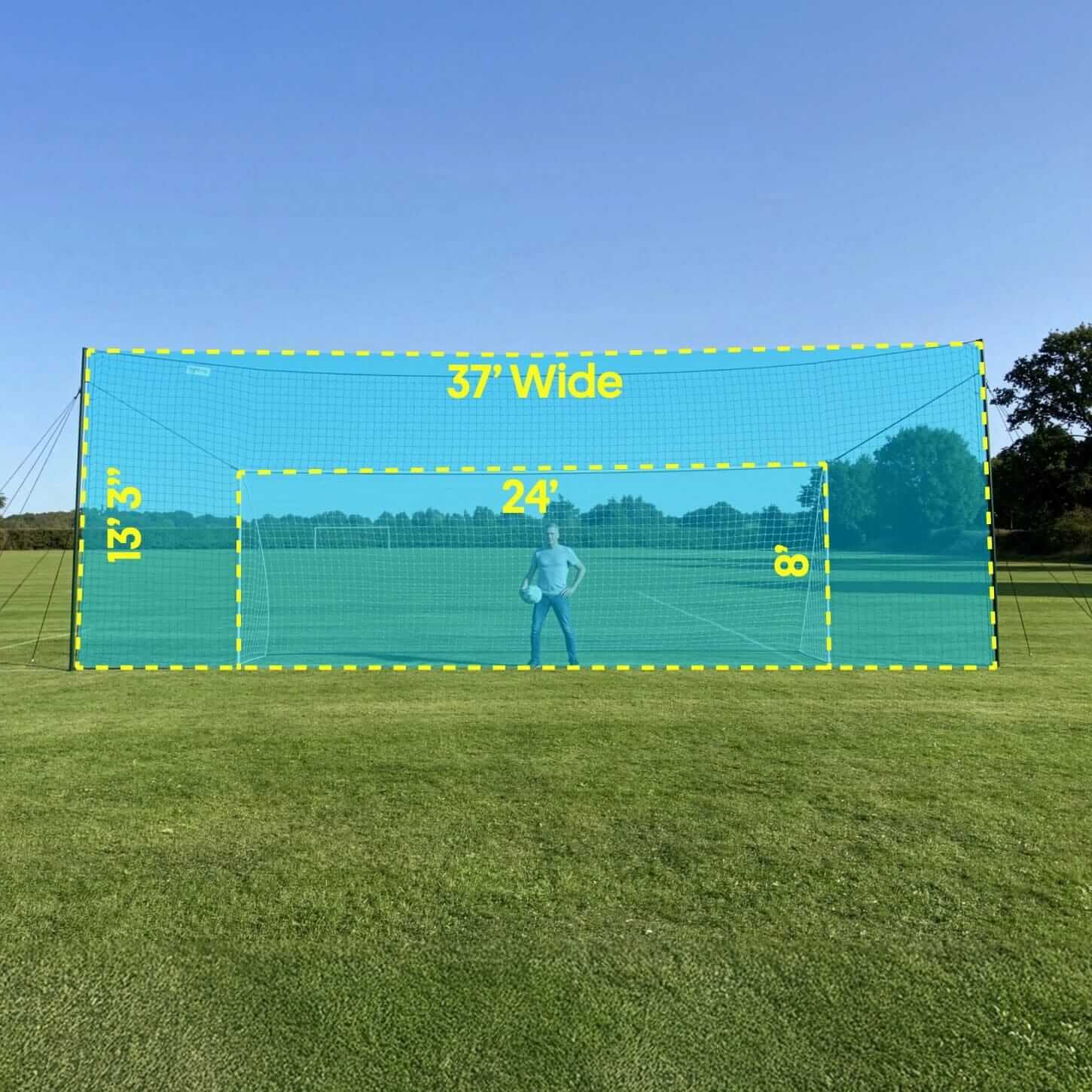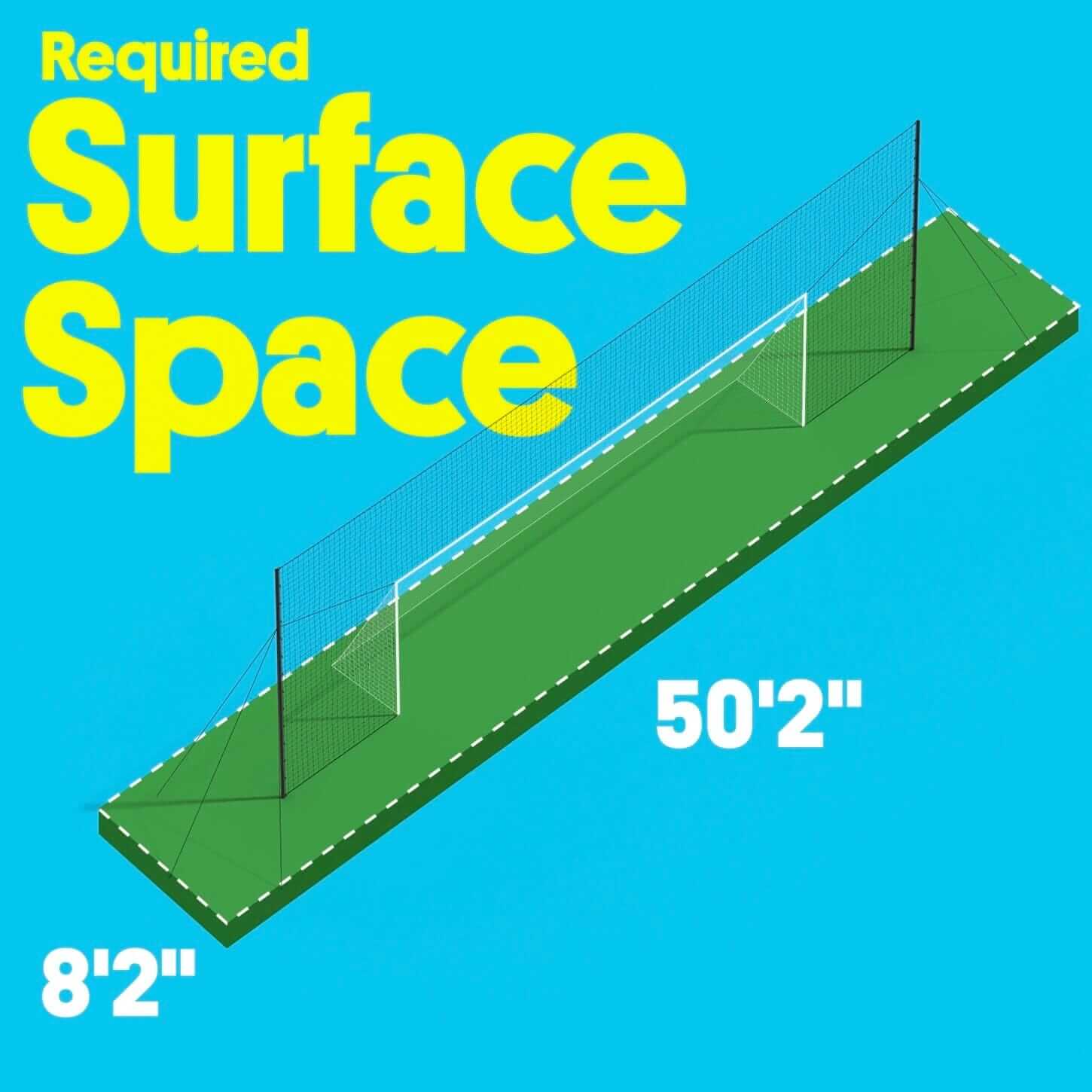Today we will take a moment and talk about soccer agility drills that you can do anywhere. Soccer is an incredible sport. It combines the speed and agility of football with a challenging, aerobic workout that keeps you looking fit and improves your mental health and creativity. When training for soccer, it's important to go beyond shooting drills on a soccer goal. Here are some easy agility drills to take your game to the next level.
Top 7 Soccer Agility Drills You Can Do Anywhere
There are still many people out there who think soccer is something that you only play on the field with an actual ball.
Sometimes, even though soccer is such a versatile sport, it's so hard to get running drills in the gym or on the soccer field if you don't have some space set aside for it.
If you want to get better at soccer while simultaneously getting a killer workout, then you need to include agility training in your routine. And if you’re pressed for time and space, don’t worry, the agility cone drills soccer below are designed to be done anywhere.
If you want to improve your agility and increase your ability on the field, here are seven drills that you can practice anywhere.
1. Sprint-Backpedal-Turn Drill
The first drill we'll be going over is called the "sprint-backpedal-turn" drill. This drill is most similar to a typical sprint and turns drill, but instead of running forward and then changing directions, you'll be running in a zig-zag pattern.
What Are They?
These drills are done slowly and at short distances, usually between 30 and 45 seconds. Through these drills, you will want to focus on acceleration, speed, and agility. You'll want to stretch each leg out in front of you for about 10 seconds before moving on to the next drill.
How To Do It?
Start by lying face down on the ground or floor with your legs and arms extended straight out from your body.
When your coach blows the whistle, you'll need to pedal and sprint in the opposite direction. Your legs will continue to pedal as you run forward, and when they are at full acceleration, they should be pointing backward straight ahead. This is what we call a "backpedal."
When your coach blows the whistle again, you should change directions and sprint with both legs. You'll need to keep running in that zig-zag pattern until you get back to where you started.
Why Are They Needed?
This drill is excellent for improving your speed and agility. It's also good to check your form and ensure you're running at your maximum potential. This allows you to boost both of those skills without leaving the ground and without going very far.
How Often To Do Them?
You'll want to do this drill between 2 and 5 times. Each time you do it, you should focus on improving your form and speed while also ensuring that you are running as fast as possible.

2. Slalom Drills
The next drill that we're going over is called the slalom drill. In this drill, you will run through a narrow obstacle course consisting of cones.
This is not a sprinting drill, so you will run at an easy jog for the duration of the exercise. You'll need to ensure that you don't leave your feet behind or get caught on obstacles, which can lead to injury.
Slalom drills are also great because they combine agility with footwork training and help improve speed and endurance.
What Are They?
These agility soccer drills start as small exercises in running without leaving your feet behind, but they can be expanded in different ways over time. You'll need cones around three feet apart and various obstacles to practice changing direction.
How To Do It?
Start by standing in the center of the cones and taping your ankles together. Keep your feet together and point them forward at all times.
Start by jogging in place over the cones, and then make small circles on each cone while keeping your feet together. You can continue until you've completed a circle around each cone or until you run out of time.
Why Are They Needed?
This is a great drill if you are starting to run or want to improve your speed in smaller areas.
How Often To Do Them?
Start with one per week and then gradually increase the amount in which you do them.
3. Four Cone Agility Drills
The next drill is called the "four-cone agility drill." In this exercise, you'll be moving through obstacles with your feet instead of your body.
This drill will help you improve both speed and agility and will be an excellent place for you to start if you want to learn how to Navigate turns and arcs at quick speeds.
What Are They?
This is basically what it sounds like: You'll be running through the cones at full speed (maybe even faster than normal) while only leaving one or two feet behind each time.
How To Do It?
Set up the cones in an L-shape formation by placing them about three feet apart and ensuring they are perpendicular to each other.
Start by facing one of the cones and then slowly speed up until you are running through the entire formation with only a few inches between your feet. You'll want to retrace your steps to run over each cone at full speed.
Why Are They Needed?
This drill is great because it helps you improve your acceleration. It also improves your control and lets you focus on improving speed and agility.
How Often To Do Them?
These soccer agility drill are usually done once every week. You'll want to increase the amount of time you spend on them as well as the number of cones you use to practice on.

4. 1-on-1 Change of Direction
This drill is called the "1-on-1 change of direction" drill. It's a great way to work on improving your speed, agility, and endurance at the same time.
What Are They?
This is an exciting drill that has you sprinting from one cone to another while doing the agility soccer drills with both legs together. You'll need someone to work with you for this exercise, though you'll only need one person for an entire group.
The one working with you will be moving in front of and behind you, helping you improve agility and ensure that you're pushing yourself as much as possible.
How To Do It?
Start by extending your arms out to the sides with your hands open and at your sides. Then, sprint from one cone to the next as fast as you can.
As you near the cone, reach out for it and then take a big step forward with your right leg (right if you're right-handed or left if you're left-handed). You'll want to lead with your right leg and maintain that same speed over the entire course of the exercise.
You'll then do this same drill on the other side while using your left leg instead of your right. You'll want to keep your arms out to the sides and maintain the same speed.
This drill is all about speed, so don't worry about making turns or doing anything fancy. Focus on keeping your arms out for balance, sprinting as fast as you can, and then reaching out for each cone with a new leg.
Why Are They Needed?
This is an intermediate drill that improves endurance while also boosting speed and agility.
How Often To Do Them?
You'll want to do this drill between 2-3 times per week. Each time you do it, you should see yourself improving your performance over time.

5. Ladder Work
The fifth drill that we're going over is the ladder drill. When you do a ladder drill, you'll try to get from one cone to the next without leaving your feet behind you. The goal of this exercise is to improve your speed and agility, as well as your endurance over time.
What Are They?
A ladder drill is exactly what it sounds like: You'll be climbing up a rope or ladder and then crossing over each rung as fast as possible. The challenge here is that there aren't any rungs on a ladder; instead, the goal is to keep moving forward while crossing each rung in order.
How To Do It?
Start by standing about three feet away from the first cone and then place your tennis shoe or foot on the cone. This will serve as your first rung. Step up with one leg on the cone, and then take a step forward until you reach the second cone.
Your foot should be right next to (or possibly touching) this second cone, the rung you'll use to begin your ascent up the ladder.
Again, step forward with your right leg and place it in front of you while keeping your arms out for balance. This will be your third rung. Continue like this until you've completed your rung ladder and gone from one cone to the next.
You'll want to keep your strides as short as possible and ensure you have momentum when you first step on each cone.
You'll also want to focus on keeping both feet off the ladder or rope itself, only using the cones so that you can keep moving forward. As difficult as it sounds, this drill can prove challenging even for experienced sprinters.
Why Are They Needed?
The ladder drill is excellent because it works on balance while improving speed and agility over time.
How Often To Do Them?
This drill is normally done once or twice a week. You'll want to increase the amount of time you spend on ladder drills and the number of times you do them over time.
6. Plyometric hurdles
The sixth that we're going to work with is a plyometric hurdle. You'll need some practice hurdles to do this drill, which should be set up in a straight line.
What Are They?
With this exercise, you'll be trying to jump over each hurdle while keeping your speed as high as possible. Each time you jump over one of these hurdles, you'll have to land on the opposite side with the same leg that went over the hurdle.
For example, if I could only use my left leg for this exercise, I'd only be able to use my left leg when landing on each one of the hurdles.
How To Do It?
Start at one end of the line of hurdles and then try to jump over each one with both legs. Be sure to keep your arms to the sides, your hands open, and your head up to maintain your balance.
You'll want to be careful when doing this drill since you'll need a lot of speed, so be sure not to jump over the first hurdle too quickly.
Instead, use some time (either seconds or minutes) to get used to jumping over the hurdles with both legs at once. Make sure you are using the same leg for each hurdle so that you can work on maintaining speed as well as keeping control of your body.
Why Are They Needed?
A plyometric hurdle drill will help you improve your speed and agility. It's also a great way to work on your overall endurance.
How Often To Do Them?
You'll want to do this exercise between 2-3 times per week. You'll also want to increase the amount of time you spend on this drill.
Beginners can perform exercises like these every day; however, advanced athletes would be wise only to do this exercise 2-3 times per week instead of every day.
7. Mirror Boxes
The final exercise we're going over today is the mirror box drill. With these exercises, you'll be working on your technique and improving your speed and agility over time.
What Are They?
With these agility drills soccer, you'll be working with a partner. For this drill, you should have one partner with a mirror box facing them and another person facing away from the mirror box with their arms out to the sides for balance.
The goal is to sprint towards the mirror box with both legs (left leg for lefties, right leg for righties) and then jump off one leg (the same leg each time) while landing on the other foot. Your partner will try to mimic your movements so that you can help each other with the drill.
How To Do It?
Start by holding your partner open the mirror box at about chest level. You should then face it and sprint towards it, jumping off one leg while landing on the other foot.
Be sure to move quickly and land as lightly as possible since you don't want to place too much pressure on the knee when jumping off it.
You'll want to do this as fast as possible, and either you or your partner can count how many times you did it in a set period (e.g., 10 seconds, 30 seconds, 1 minute).
FAQs
Question: How do I motivate my soccer team to improve their agility?
Answer: There are many ways you can improve your agility and speed. Before a practice or a game, you could run through one or two of the drills with your team. They will love the change of pace, which will help them improve their game.
Question: I want to increase my speed. Which of these drills should I do?
Answer: One of the best agility drills soccer for increasing your running speed is a shuttle run. You can do this drill anywhere, and it's great for kids, too.
Find a flat surface and then use cones or some other marker to set up a series of 3-yard lines. You're going to run from one line to the next as quickly as possible, stopping on each line for about 10 seconds.
Question: How long should I run these agility drills?
Answer: If you're doing them after a workout and you're already tired, it's best only to do them for a minute or two. The point is to improve your speed or agility, not push yourself hard enough to be exhausted.
On the other hand, if you want to be more cardiovascular fit and increase your oxygen intake and ability to breathe properly, you should practice these soccer agility drills with ball for longer periods. Check out our soccer dribbling drills to master ball handling.
Question: These drills seem like they would be helpful for soccer players on my team, but how can I get them motivated?
Answer: Motivation is a big part of getting better at anything. It takes pushing yourself, engaging in new activities, and pushing through those things you don't feel like doing. Your teammates will love seeing you work so hard to improve, giving you more motivation than they might realize.
Question: I'm not a soccer player. Can I still do these agility drills?
Answer: Of course, you can use these drills for any sport, and if it's something that interests you, then go ahead and try them out. These soccer agility drills with a quality soccer ball are for you if you have an extra minute or so every day.
Conclusion
The great thing about these drills is that they require no equipment and can be practiced at any time and place.
You can practice your agility on the go or even in the office with the help of a soccer agility drills pdf.
Agility drills for soccer are not only thrilling to practice, but they can increase your speed and flexibility. This will enable you to move faster, dribble more efficiently, and ensure that you are always on your feet during a match.
As a beginner looking for ways to improve your performance in soccer, don't overlook these exercises. They are designed to help you improve your game by boosting your overall fitness level, speed, and reaction time.
For the ultimate soccer training experience, check out our Patented Soccer Goal + Backstop + Rebounder ALL IN ONE!




